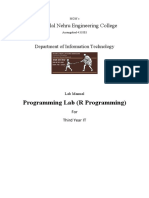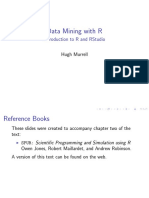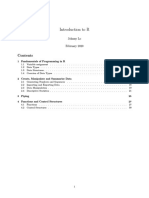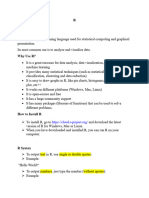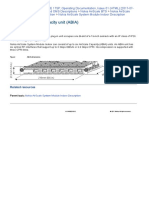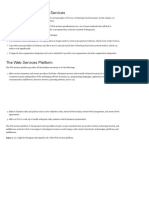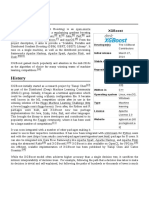0% found this document useful (0 votes)
13 views5 pagesNotes
The document provides an introduction to R programming, covering its features, installation, and usage for statistical computing and data visualization. It explains R's data types, objects, and essential operations, including reading/writing data and subsetting. Additionally, it discusses variable naming conventions, operators, and logical operations in R.
Uploaded by
atechzoneacademyCopyright
© © All Rights Reserved
We take content rights seriously. If you suspect this is your content, claim it here.
Available Formats
Download as PDF, TXT or read online on Scribd
0% found this document useful (0 votes)
13 views5 pagesNotes
The document provides an introduction to R programming, covering its features, installation, and usage for statistical computing and data visualization. It explains R's data types, objects, and essential operations, including reading/writing data and subsetting. Additionally, it discusses variable naming conventions, operators, and logical operations in R.
Uploaded by
atechzoneacademyCopyright
© © All Rights Reserved
We take content rights seriously. If you suspect this is your content, claim it here.
Available Formats
Download as PDF, TXT or read online on Scribd
/ 5





